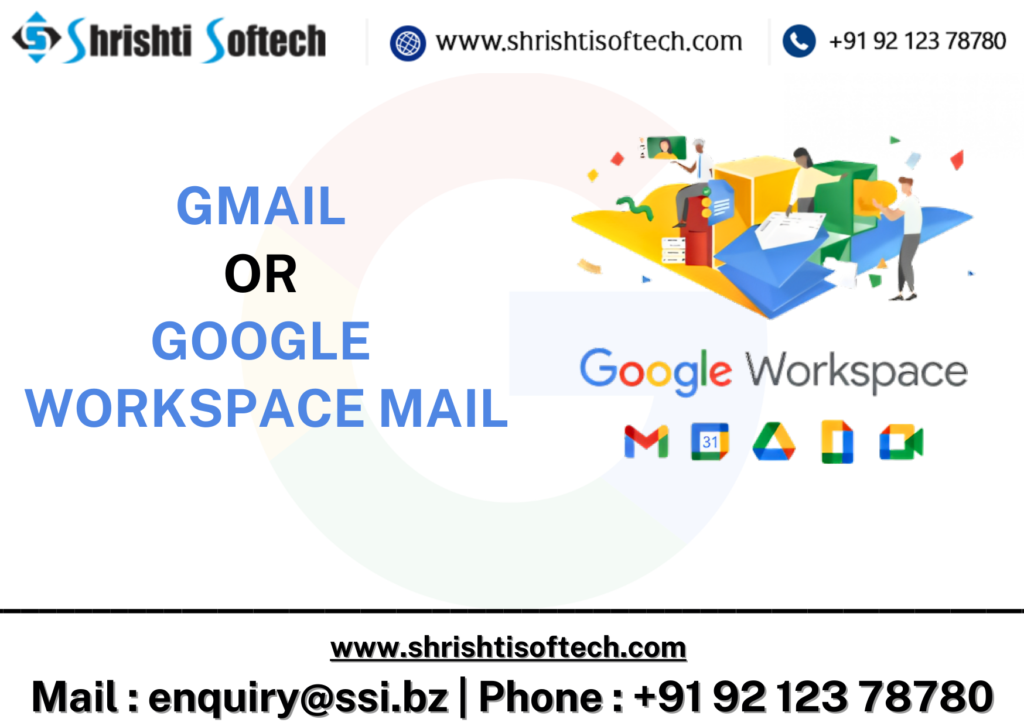
In today’s digital age, email is an indispensable tool for communication, both in personal and professional spheres. Google offers two primary email solutions: Gmail and Google Workspace Mail (formerly known as G Suite). While both services are developed by Google, they cater to different audiences and come with distinct features. In this blog post, we’ll explore the differences between Gmail and Google Workspace Mail to help you make an informed decision about which email solution suits your requirements best.
Purpose and Target Audience
Gmail : Gmail is Google’s free email service primarily designed for individual users. It offers a simple and user-friendly interface along with basic email functionalities.
Google Workspace Mail : Formerly known as G Suite, Google Workspace Mail is designed for businesses and organizations of all sizes. It provides a comprehensive suite of productivity and collaboration tools in addition to advanced email capabilities.
Custom Domain
Gmail : Gmail allows users to create an email account using the “@gmail.com” domain. While it’s free and suitable for personal use, it might not be suitable for businesses looking for a professional image.
Google Workspace Mail : With Google Workspace Mail, you can use your organization’s custom domain for email addresses (e.g., “@yourcompany.com“). This feature enhances your brand’s professionalism and credibility.
Storage
Gmail : Gmail offers a limited amount of free storage space for individual users. Additional storage can be purchased if needed.
Google Workspace Mail : Google Workspace Mail provides larger storage capacities, which are particularly important for businesses dealing with a high volume of emails and attachments.
Collaboration Tools
Gmail : Gmail offers some basic collaboration features like sharing files via Google Drive and collaborating on documents in Google Docs. However, these features are not as comprehensive as those offered by Google Workspace Mail.
Google Workspace Mail : Google Workspace Mail includes a wide range of collaboration tools, including Google Drive for file storage and sharing, Google Docs, Sheets, Slides for document collaboration, and Google Calendar for scheduling and coordination. This suite of tools promotes seamless teamwork and communication within organizations.
Administrative Controls
Gmail : Gmail provides limited administrative controls, suitable for individual users. However, it lacks the advanced management features required by businesses.
Google Workspace Mail : Google Workspace Mail offers robust administrative controls that allow organizations to manage user accounts, security settings, access permissions, and more. This is crucial for maintaining data security and compliance.
Security Features
Gmail : Gmail includes standard security features like spam filtering, two-factor authentication (2FA), and encryption for emails in transit.
Google Workspace Mail : Google Workspace Mail offers enhanced security features, including advanced threat detection, data loss prevention (DLP), and options for email encryption. These features help safeguard sensitive business information.
Conclusion
In summary, Gmail and Google Workspace Mail serve different purposes and cater to distinct user needs. Gmail is suitable for individual users looking for a simple and free email service, while Google Workspace Mail is designed for businesses seeking a comprehensive email solution integrated with productivity and collaboration tools. When deciding between the two, consider factors such as your organization’s size, collaboration requirements, branding needs, and security considerations. Ultimately, choosing the right email solution will contribute to efficient communication and enhanced productivity within your personal or professional sphere.
